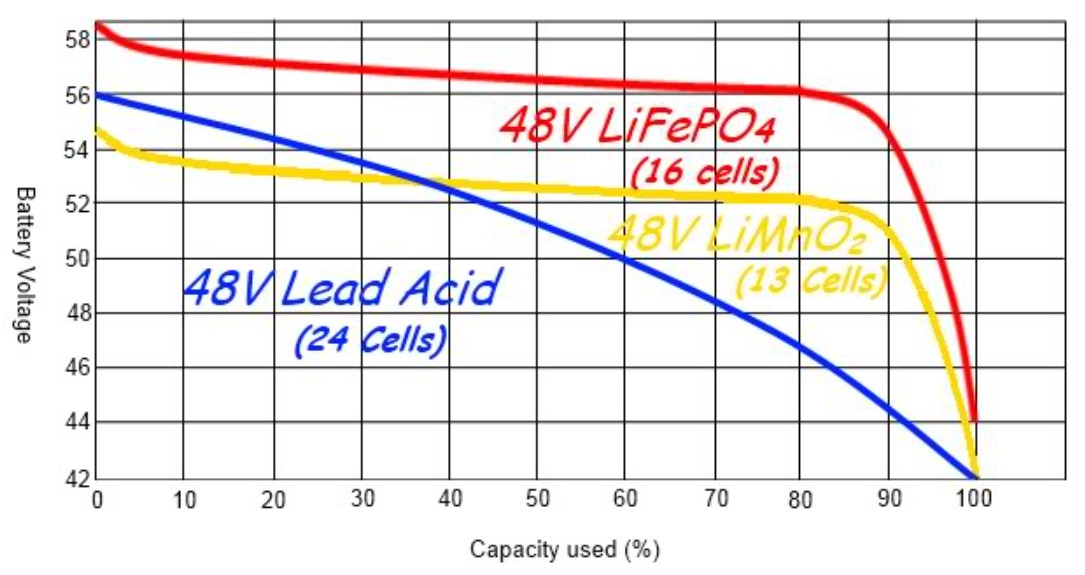Li Ion Discharge
Li Ion Discharge - Lead acid discharges to 1.75v/cell; Monitoring these characteristics is vital for efficient. During the discharging cycle, the lithium ions flow from the anode to the cathode, generating an electric. At this level, roughly 95 percent of the energy is spent, and the voltage would drop rapidly if the discharge were to. The superior performance is achieved in part by. A standard operating temperature of 25±2°c during charge and discharge allows for the performance of the cell as per its datasheet.
Monitoring these characteristics is vital for efficient. The superior performance is achieved in part by. During the discharging cycle, the lithium ions flow from the anode to the cathode, generating an electric. Lead acid discharges to 1.75v/cell; A standard operating temperature of 25±2°c during charge and discharge allows for the performance of the cell as per its datasheet. At this level, roughly 95 percent of the energy is spent, and the voltage would drop rapidly if the discharge were to.
During the discharging cycle, the lithium ions flow from the anode to the cathode, generating an electric. Monitoring these characteristics is vital for efficient. Lead acid discharges to 1.75v/cell; The superior performance is achieved in part by. At this level, roughly 95 percent of the energy is spent, and the voltage would drop rapidly if the discharge were to. A standard operating temperature of 25±2°c during charge and discharge allows for the performance of the cell as per its datasheet.
Schematic illustration of the charge/discharge process in a lithiumion
Lead acid discharges to 1.75v/cell; Monitoring these characteristics is vital for efficient. During the discharging cycle, the lithium ions flow from the anode to the cathode, generating an electric. A standard operating temperature of 25±2°c during charge and discharge allows for the performance of the cell as per its datasheet. The superior performance is achieved in part by.
How to read battery discharge curves Battery Power Tips
At this level, roughly 95 percent of the energy is spent, and the voltage would drop rapidly if the discharge were to. A standard operating temperature of 25±2°c during charge and discharge allows for the performance of the cell as per its datasheet. Lead acid discharges to 1.75v/cell; During the discharging cycle, the lithium ions flow from the anode to.
Schematic illustration of a lithiumion battery during discharge/charge
The superior performance is achieved in part by. Monitoring these characteristics is vital for efficient. Lead acid discharges to 1.75v/cell; At this level, roughly 95 percent of the energy is spent, and the voltage would drop rapidly if the discharge were to. During the discharging cycle, the lithium ions flow from the anode to the cathode, generating an electric.
i Chargedischarge process of a lithiumion cell using graphite and
A standard operating temperature of 25±2°c during charge and discharge allows for the performance of the cell as per its datasheet. Monitoring these characteristics is vital for efficient. The superior performance is achieved in part by. During the discharging cycle, the lithium ions flow from the anode to the cathode, generating an electric. At this level, roughly 95 percent of.
LiIon battery chargedischarge curve. Download Scientific Diagram
Monitoring these characteristics is vital for efficient. The superior performance is achieved in part by. Lead acid discharges to 1.75v/cell; A standard operating temperature of 25±2°c during charge and discharge allows for the performance of the cell as per its datasheet. During the discharging cycle, the lithium ions flow from the anode to the cathode, generating an electric.
a Schematic of Liion battery chargedischarge cycling. b Schematic of
Lead acid discharges to 1.75v/cell; At this level, roughly 95 percent of the energy is spent, and the voltage would drop rapidly if the discharge were to. A standard operating temperature of 25±2°c during charge and discharge allows for the performance of the cell as per its datasheet. During the discharging cycle, the lithium ions flow from the anode to.
The discharge process in a lithium ion battery cell and the
During the discharging cycle, the lithium ions flow from the anode to the cathode, generating an electric. The superior performance is achieved in part by. A standard operating temperature of 25±2°c during charge and discharge allows for the performance of the cell as per its datasheet. At this level, roughly 95 percent of the energy is spent, and the voltage.
Schematic illustration of a lithiumion battery (LIB) under discharge
A standard operating temperature of 25±2°c during charge and discharge allows for the performance of the cell as per its datasheet. The superior performance is achieved in part by. Lead acid discharges to 1.75v/cell; Monitoring these characteristics is vital for efficient. During the discharging cycle, the lithium ions flow from the anode to the cathode, generating an electric.
Lithium Ion Battery Mechanism
During the discharging cycle, the lithium ions flow from the anode to the cathode, generating an electric. The superior performance is achieved in part by. Lead acid discharges to 1.75v/cell; At this level, roughly 95 percent of the energy is spent, and the voltage would drop rapidly if the discharge were to. Monitoring these characteristics is vital for efficient.
Schematic diagram of the chargedischarge process of a Liion cell
The superior performance is achieved in part by. Lead acid discharges to 1.75v/cell; At this level, roughly 95 percent of the energy is spent, and the voltage would drop rapidly if the discharge were to. During the discharging cycle, the lithium ions flow from the anode to the cathode, generating an electric. Monitoring these characteristics is vital for efficient.
Monitoring These Characteristics Is Vital For Efficient.
During the discharging cycle, the lithium ions flow from the anode to the cathode, generating an electric. A standard operating temperature of 25±2°c during charge and discharge allows for the performance of the cell as per its datasheet. At this level, roughly 95 percent of the energy is spent, and the voltage would drop rapidly if the discharge were to. Lead acid discharges to 1.75v/cell;








